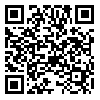Volume 21, Issue 73 (10-2018)
jha 2018, 21(73): 49-60 |
Back to browse issues page
1- School of Paramedical Sciences, Mashhad University of Medical Sciences, Mashhad, Iran
2- Deputy of Research & Technology, Ministry of Health & Medical Education, Tehran, Iran ,ghorbani@research.ac.ir
2- Deputy of Research & Technology, Ministry of Health & Medical Education, Tehran, Iran ,
Abstract: (3589 Views)
Introduction: Congenital anomalies are the leading causes of infant death at birth and during infancy, and are considered as significant and costly health problems. Therefore, a national registry of congenital anomalies is needed to calculate health indexes because collecting and reporting birth anomalies facilitate assessment, and health planning. Consequently, this study aimed to determine the minimum number of birth defects at the national level for planning and controlling the anomalies.
Methods: This applied and descriptive-comparative research was conducted in three phases in 2016-2017. That is, defining the registers of congenital anomalies in the countries of excellence, designing and validating a minimum data set using the Delphi technique.
Results: After the revision of elements in selected registries, a minimum data set was developed including 35 elements which were then, based on the result of the Delphi technique, reduced to 25 elemetns in four subsets including infant records, maternal records, maternal socioeconomic status and history of the anomaly.
Conclusion: A national minimum Data Set plays an important role in disease monitoring and registry. It facilitates data collection and transmission throughout the country and enhances the potential for using data and responding to critical public health issues. Therefore, it is recommended to incorporate the national minimum data set into the maternal and child systems (IMAN) to collect information about congenital anomalies more efficiently and comprehensively.
Methods: This applied and descriptive-comparative research was conducted in three phases in 2016-2017. That is, defining the registers of congenital anomalies in the countries of excellence, designing and validating a minimum data set using the Delphi technique.
Results: After the revision of elements in selected registries, a minimum data set was developed including 35 elements which were then, based on the result of the Delphi technique, reduced to 25 elemetns in four subsets including infant records, maternal records, maternal socioeconomic status and history of the anomaly.
Conclusion: A national minimum Data Set plays an important role in disease monitoring and registry. It facilitates data collection and transmission throughout the country and enhances the potential for using data and responding to critical public health issues. Therefore, it is recommended to incorporate the national minimum data set into the maternal and child systems (IMAN) to collect information about congenital anomalies more efficiently and comprehensively.
Type of Study: Research |
Received: 2018/03/10 | Accepted: 2018/09/23 | Published: 2018/09/29
Received: 2018/03/10 | Accepted: 2018/09/23 | Published: 2018/09/29
| Rights and permissions | |
 |
This work is licensed under a Creative Commons Attribution-NonCommercial 4.0 International License. |



